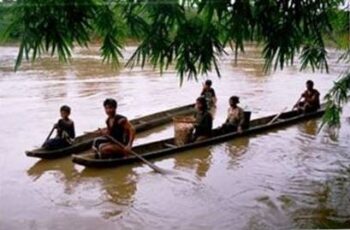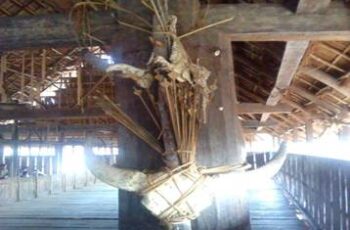Ad Blocker Detected
Our website is made possible by displaying online advertisements to our visitors. Please consider supporting us by disabling your ad blocker.
The first time we went to Quy Hoa (Ghenh Rang Ward, Quy Nhon City, Binh Dinh) was about 20 years ago. In all that time, I can’t remember exactly how many times I’ve been here. Just know that this place, somehow miraculously, still retains most of the beauty from the past like a beautiful fairy tale so that anyone who comes here can still hear and tell their own story. me.
Valley of dreams and nostalgia
With an area of about 60 hectares, surrounded by mountains and hills and facing the sea breeze with beautiful natural scenery, Quy Hoa is now a rare and precious piece of “golden” land left over from a city on its way. developing very quickly like Quy Nhon. However, few people know that this land was once a place that those living in it as well as outsiders wanted it to be submerged in oblivion.
|
According to documents, around 1929, a French priest named Paul Maheu discovered the rare peace and quiet of this land and he decided to build a treatment area for leprosy patients. name Laroserie de Quy Hoa Hospital. In 1932, the hospital was rebuilt by Charles Antoine and Ozithe, including a building for patients to come here for long-term treatment. In addition to the hospital, Quy Hoa campus also has a church, a residence for nuns and more than 200 houses for leprosy patients to settle down.
In 1936, poet Han Mac Tu contracted leprosy and lived the last years of his life in Quy Hoa to treat the disease and write poetry. In pain, loneliness and sadness, Han Mac Tu’s poems with a very unique talent were born in this picturesque land such as: “Crazy Poetry”, “Fragrance”. “Bitter bile”, “Crazy blood and crazy soul”… Since then, Quy Hoa has also become better known. For those who admire Han Mac Tu’s poetry, Quy Hoa is a destination not to be missed in life. People who admire poetry, people who mourn the loss of a talented man, people who find beauty and sympathy in his poetry come here every year to commemorate.
Leprosy is now no longer viewed with incomplete information as before, the disease is not contagious and can be cured with the development of medicine. The leprosy village with about 250 households and nearly 500 people is now becoming a unique and interesting destination for tourists from near and far. Unique in that the village is entirely inhabited by generations of people with leprosy, retains most of the Gothic architecture from the French period and has no new or high-rise buildings.
 |
|
Bright bougainvillea flowers in maple village NGUYEN DUNG |
The mixture of architecture, culture and history imprinted on each weather-faded house makes the maple village unique and imbued with nostalgic beauty. People here still maintain the same pace of life as their ancestors left behind. In the early morning, the men in the village go to the beach together to cast nets, while the women go to the market to take care of the home. In the afternoon, the women in the village gather to mend nets, plant crops and exchange stories in the neighborhood under the coconut trees, casuarina trees and colorful bougainvillea trellises.
Something special about the leprosy village

Related news
Go to Nam Du to fish and eat grilled fish on the spot and hear stories about the island
If we just came here and took a walk around to enjoy the maple village, it wouldn’t make such an impression. Behind those poetic and romantic scenes are special stories that we always remember and want to witness with our own eyes many more times.
It’s about making shoes for leprosy patients. Those are very different shoes even though they are the same pair. Different in size, shape, heel height… There are shoes that are worn out on one side because the patient’s foot is turned over, crooked or walks on the instep. There is also a round sole, as small as a fist, supporting the foot that only has a tiny heel left… Behind those shoes are many long life stories, measured in hardship, pain and wear. have a cold.
Quy Hoa Central Leprosy and Dermatology Hospital shoe factory was established in 1997, sponsored by two non-governmental organizations Handicap International (HI) and the Netherlands Leprosy Relief Association (NLR). The country currently has 7 shoemaking facilities for people with leprosy, in the provinces of Da Nang, Quang Nam, Ninh Thuan, Dak Lak, Kon Tum, Khanh Hoa and Quy Nhon. Of these, the facility in Quy Nhon is the largest, responsible for providing materials and technical training to other places.
 |
|
The ancient architecture is still preserved with many Gothic traces NGUYEN DUNG |
|
The future generation of the leprosy village is being cared for and fully educated NGUYEN DUNG |
Of the 8 shoemakers, there are 7 people living in the leprosy village. From the early days, they wanted to learn the profession of making this special shoe, because they were also children and grandchildren of leprosy patients. The sympathy and sharing of these people comes from their blood. More than anyone else, they understand the difficulties and inconveniences of patients. Missing even the simplest thing in life like shoes becomes a problem.
Life is not easy and is even more difficult for people with leprosy and low economic status. However, the people here have not lost their love of life and hospitality. Walking here, visitors from far away feel the peace and gentleness under each house and the smiles of the people in the village. They are ready to invite you to a simple meal, make a delicious pot of tea or tell you stories from the past.





